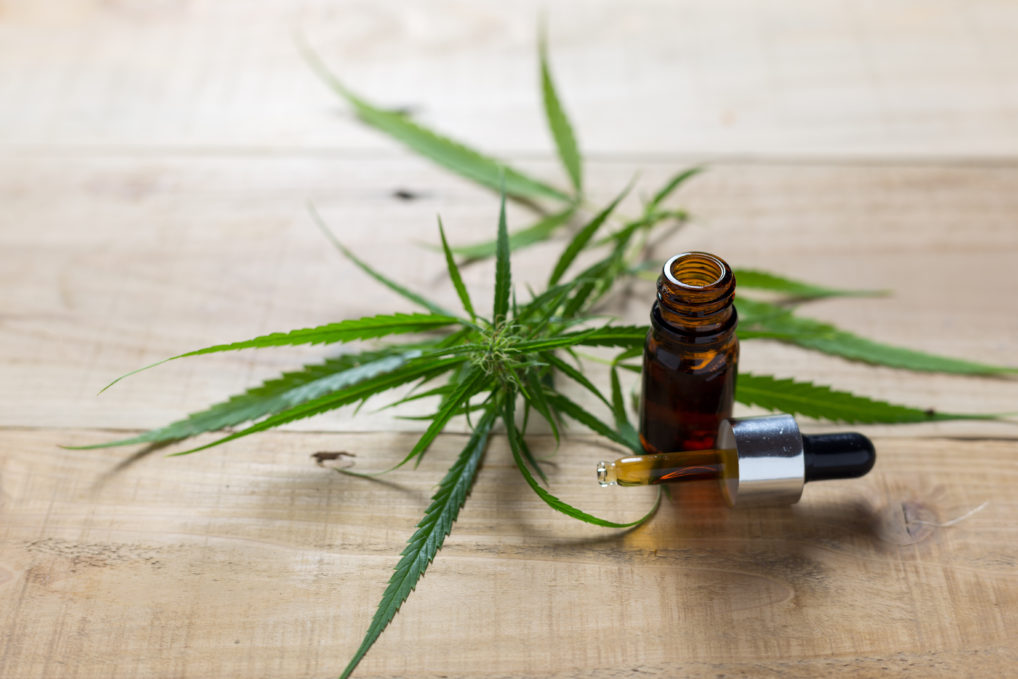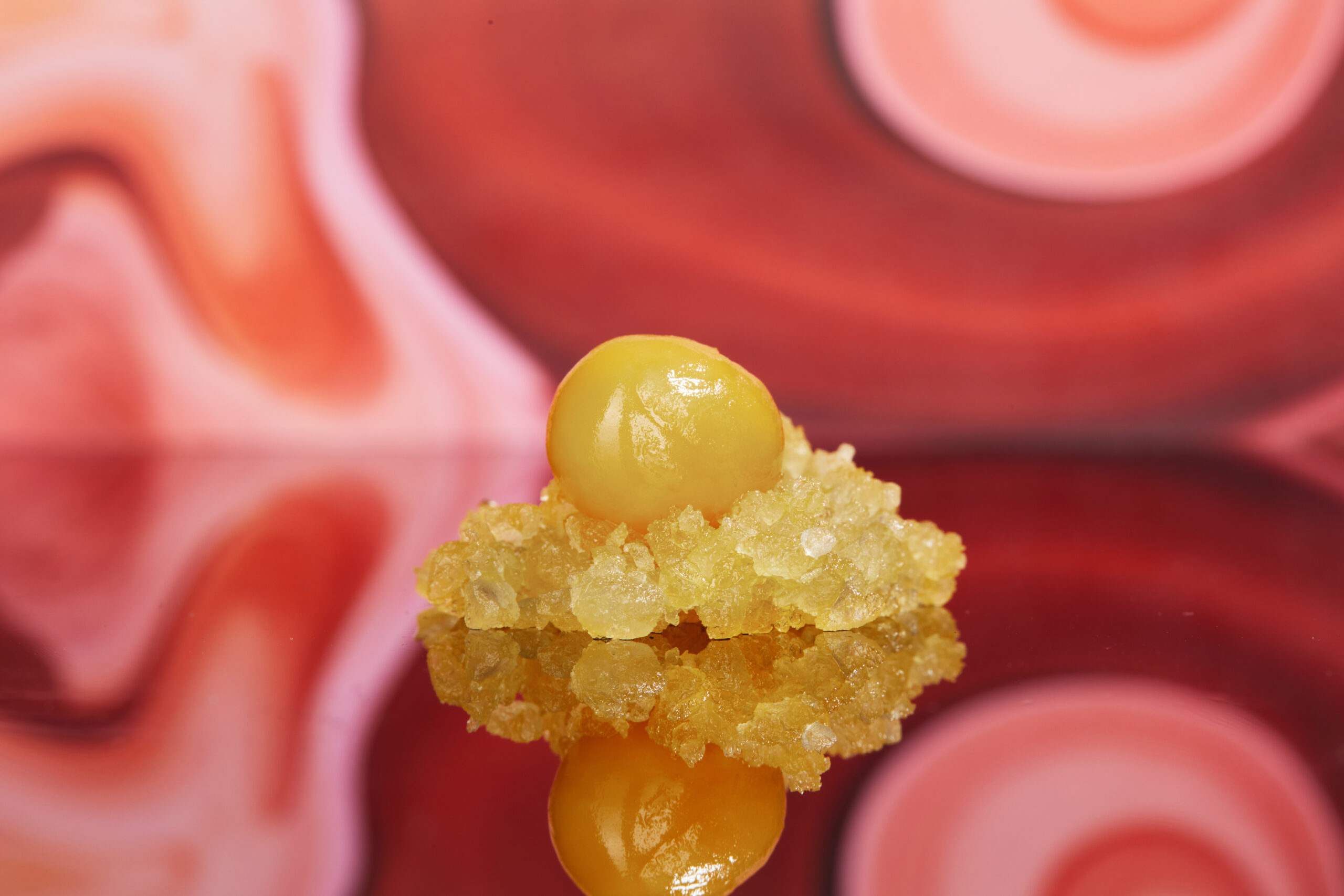The appealing aromas and flavors you experience when smoking, dabbing, or vaping cannabis are thanks to terpenes. These beneficial molecules make each strain unique and deliver those tasty citrus, diesel, herbal, and other flavors noticeable in quality flower or concentrates. Learn more about terpenes, their potential benefits, and their role in cannabis.
What are terpenes?
Terpenes are aromatic compounds that provide the smell and flavor of cannabis and a variety of other plants. Each weed strain has its own unique aroma due to its distinct terpene content. This large and diverse class of organic compounds can also be found in some insects, such as bees, cockroaches, and butterflies, which use terpenes as a form of chemical communication.
What do they do?
Aside from aroma and taste, terpenes support other cannabis compounds in producing their desired effects. This is called the entourage or ensemble effect, and it's why these compounds have become such a critical area of cannabis research.
Terpene effects
Terpenes and cannabinoids may augment or minimize one another's effects, depending on which combination is present in a given cultivar and how an individual responds to it. Mounting scientific evidence suggests that terpenes play a considerable role in tempering the intoxicating effects of THC, creating synergy with other cannabinoids, and even increasing their therapeutic value.
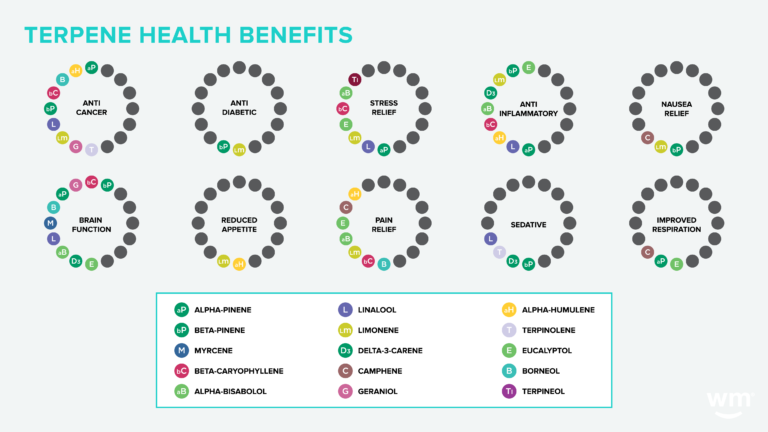 Photo by: Weedmaps
Photo by: WeedmapsImage lightbox

New research published in the journal Biochemical Pharmacology has also come out showing that 16 different terpenes, when tested individually, activated type 1 cannabinoid receptors at about 10 - 50% of the activation by THC alone. The combination of some of these terpenes with THC significantly increased the activity of the CB1 receptor, compared to THC alone, and was greater than the sum of the activations by each individual component, suggesting a synergistic effect.
Terpene benefits
From reducing inflammation to providing sedation, different terpenes have different benefits:
- Anti-cancer potential: Research into the anti-cancer properties of terpenes is ongoing, and some studies suggest that certain terpenes may have tumor-inhibiting properties. However, this research is still in its early stages, and more rigorous clinical trials are needed.
- Anti-inflammatory: Terpenes, like beta-caryophyllene, have shown anti-inflammatory effects, which could be beneficial in treating conditions characterized by inflammation. Caryophyllene also acts like a cannabinoid as it binds to the type 2 cannabinoid receptor, resulting in a reduction in inflammation.
- Antimicrobial and/or antifungal: Some terpenes, such as pinene and limonene, possess antimicrobial and antifungal properties, suggesting potential therapeutic uses in combating infections.
- Boost therapeutic effects: Terpenes may enhance or modify the therapeutic effects of cannabinoids. For example, some might amplify the pain-relieving properties of THC or the anti-anxiety effects of CBD. Others might also help mitigate the adverse effects of THC, such as anxiety or short-term memory impairment.
- Sleep and stress relief: Myrcene and linalool are among terpenes that are thought to have sedating properties, potentially aiding in improving sleep quality. Linalool, also found in lavender, is reputed for its calming and relaxing effects.
Where are terpenes found on a cannabis plant?
Terpenes are found in the trichomes, the tiny glandular hairs that cover the surface of cannabis plants, giving them a crystal-like sheen and sticky feel.
 Photo by: Gina Coleman/Weedmaps
Photo by: Gina Coleman/WeedmapsImage lightbox

Trichomes contain resin glands that make terpenes and cannabinoids, such as tetrahydrocannabinolic acid (THCA) and cannabidiolic acid (CBDA), which turn into tetrahydrocannabinol (THC) and cannabidiol (CBD) when decarboxylated.
Why does the plant produce terpenes?
More than 200 terpenes have been discovered in the cannabis plant, but most of them are present in such low quantities that testing labs aren't even able to detect them. So why does the cannabis plant produce them at all?
- Protection: Terpenes often have strong odors that can repel herbivores and insects that might otherwise feed on the cannabis plants. Some terpenes are also toxic to certain pests, serving as a natural form of pest control. Terpenes may continue to diversify as part of an escalating defense against natural enemies that will evolve and diversify their counter-defenses in the future.
- Pollination: While cannabis is primarily wind-pollinated, the strong scents of terpenes can also attract pollinators like bees and other insects.
- Microbial defense: Many terpenes have antimicrobial and antifungal properties, which could protect weed plants from bacterial and fungal infections.
- Human intervention: Terpene diversity may also result from human intervention, or, more accurately, the chemical differences we see in cannabis may be driven by extensive cultivation and breeding for a variety of desired traits.
Do terpenes get you high?
No, terpenes themselves will not get you high. THC gets you high, but terpenes may help influence the nature of the high, making you sleepier or slightly more energized, for example.
Common terpenes
Here are some common terpenes, also referred to as dominant terpenes, found in cannabis:
- Caryophyllene
- Limonene
- Linalool
- Myrcene
- Pinene
- Terpinolene
How to sniff out dominant terpenes
Sniffing out the dominant terpenes in weed requires practice and a good sense of smell, but identifying them can enhance your understanding and appreciation of different strains. Here's a guide to help you sniff out dominant terpenes:
Fruity-smelling weed
Fruity-smelling strains like Blue Dream, Mango Kush, and Strawberry Cough often contain terpenes that impart sweet, citrusy, or tropical fruit aromas, typically limonene and myrcene.
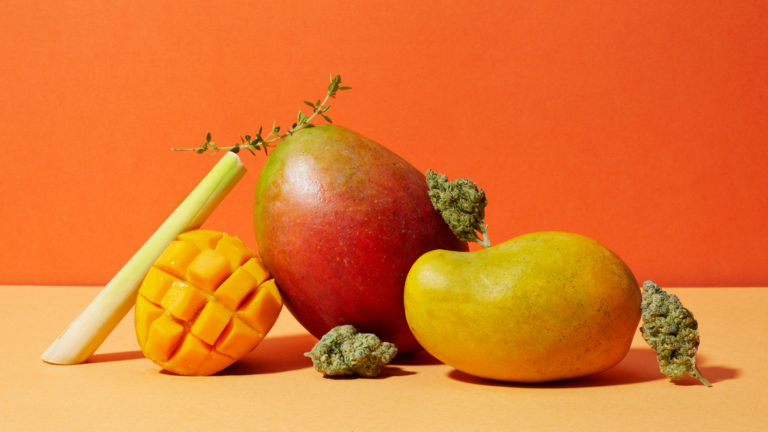 Photo by: Gina Coleman/Weedmaps
Photo by: Gina Coleman/WeedmapsImage lightbox

With its vibrant citrus aroma, limonene is reminiscent of lemon and orange peels and contributes to the sweet, tangy scent often associated with fruity strains. It's known for uplifting and mood-enhancing effects. Myrcene, on the other hand, offers a sweeter, more subtle fruitiness akin to ripe mangoes, which are also high in myrcene, which is why it's believed that eating a mango before smoking can increase the intensity of your high. Myrcene is recognized for its relaxing and sedative properties. These two terpenes create the characteristic fruity bouquet and are believed to influence the strain's overall therapeutic effects.
Spicy and herbal-smelling weed
Spicy and herbal-smelling weed strains, like Jack Herer, typically contain dominant terpenes like caryophyllene and myrcene. Caryophyllene is known for its spicy, peppery aroma and is found in black pepper, cloves, and cinnamon. It's unique among terpenes for its ability to interact with the endocannabinoid system, particularly at the CB2 receptors, often associated with anti-inflammatory and analgesic effects. In addition to the sweet smell mentioned above, myrcene has an earthy, musky aroma reminiscent of cloves. Together, these terpenes contribute to the distinctive spicy and herbal aroma and are also believed to play a role in the entourage effect, enhancing the overall therapeutic benefits of cannabis.
Citrus-smelling weed
Citrus-smelling weed strains, like Super Lemon Haze and Tangie, are primarily characterized by limonene and terpinolene.
 Photo by: Gina Coleman/Weedmaps
Photo by: Gina Coleman/WeedmapsImage lightbox

Terpinolene, a less-prominent terpene, also contributes to the citrusy profile with its sweet, piney, and slightly floral aroma. It's less common than other terpenes but adds a complex layer to the citrus scent. Together, limonene and terpinolene not only define the aromatic profile of these strains but also contribute to their potential therapeutic effects, such as improving mood and providing a sense of relaxation.
Sweet, musky-smelling weed
Sweet, musky-smelling weed strains like Granddaddy Purple and Afghan Kush often contain a combination of myrcene and linalool as their dominant terpenes. Linalool adds a sweet, floral touch reminiscent of lavender and is recognized for its stress-relieving and anti-anxiety effects. This terpene blend not only contributes to the sweet, musky aroma of certain cannabis strains but also influences their potential therapeutic benefits, including relaxation and mood enhancement.
Pine-smelling weed
Pine-smelling weed strains, like Dutch Treat and Northern Lights, predominantly feature the terpene pinene, responsible for their forest-like, piney aromas. Pinene is one of the most common terpenes found in nature, particularly abundant in pine trees, rosemary, and basil. In cannabis, it imparts a sharp, refreshing scent reminiscent of a pine forest.
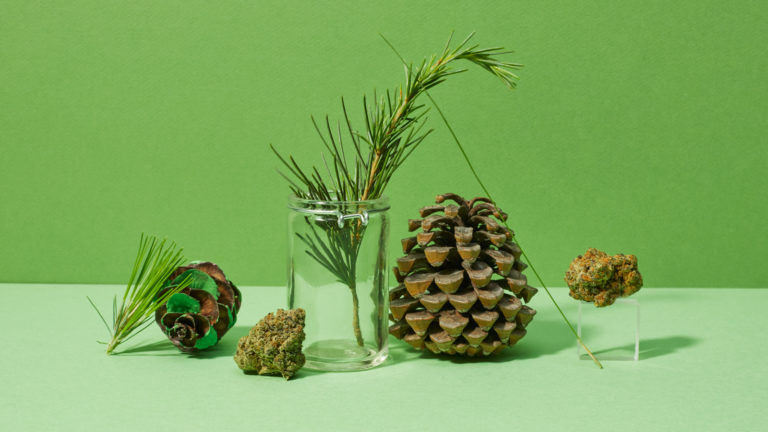 Photo by: Gina Coleman/Weedmaps
Photo by: Gina Coleman/WeedmapsImage lightbox

This terpene is known for its potential therapeutic benefits, including anti-inflammatory and bronchodilator effects, which can help improve airflow to the lungs. Pinene also has the unique ability to counteract some of the intoxicating effects of THC, which can help enhance clarity and focus. Its presence in certain cannabis strains contributes not only to its distinct aroma but also to its specific effects on mood and cognition, making it a favored choice for users seeking a refreshing, clear-headed experience.
Terpene preservation advice for cultivators
Preserving terpenes during cannabis cultivation is crucial for maintaining the plant's aromatic profile and enhancing its overall quality. Here are some key tips for cultivators to preserve terpenes:
- Grow indoors. Terpenes are sensitive to environmental factors, and growing indoors allows you to control them. Maintain stable temperatures and humidity levels in your grow area. Avoid extreme heat, as high temperatures can degrade terpenes. Ideal temperatures usually range between 70 - 80°F (21 - 27°C) with a relative humidity between 40 - 50%.
- Use high-quality lighting systems. UV-B light has been shown to increase terpene production, but ensure it's well-regulated to avoid plant stress.
- Provide a balance of nutrients. Over-fertilization, especially with nitrogen, can negatively impact terpene production. Use organic fertilizers for better flavor and aroma profiles.
- Harvest at the right time. Growers who want to get a rich terpene profile out of their plants should neither harvest too early nor too late. Harvesting too early may cut trichomes off from full cannabinoid and terpene production, while harvesting too late may produce trichomes that have decreased in chemical potency or broken off entirely. Properly ripe trichomes will be bold, distinct, and translucent on the plant's surface and — most importantly — rich in terpenes.
- Dry the harvested buds slowly and cure properly. Quick drying can degrade terpenes. Ideal drying conditions are in a dark, controlled environment with temperatures around 60 - 70°F (15 - 21°C) and humidity at 45 - 55%. Do curing gradually in airtight containers, opening them periodically to exchange air and release moisture.
Terpene-rich cannabis products
There are a few different ways to consume a higher concentration of terpenes than you might find in cured cannabis flower.
Concentrates and isolates
Concentrates have taken the cannabis world by storm in recent years, largely because of their terpene-rich content and subsequent spectrum of juicy flavors. They contain all of the most desirable properties of cannabis trichomes. Full-spectrum extracts or sauce are forms of cannabis concentrates high in terpenes.
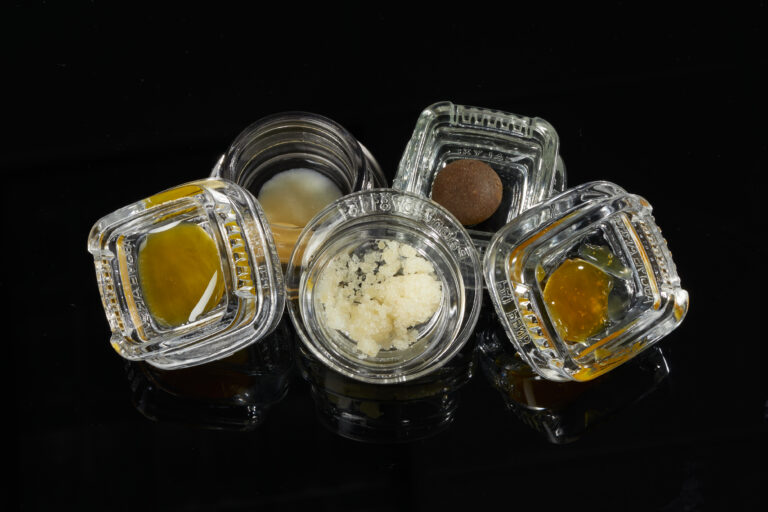 Photo by: Gina Coleman/Weedmaps
Photo by: Gina Coleman/WeedmapsImage lightbox

Isolates, or extractions of a single cannabinoid or terpene, have also become more prominent in natural medicine. The possibility of individual terpene extraction has led to various isolate products that aim to reap specific medicinal benefits.
Re-infusions
Terpene extraction isn't only used to create isolates. Once extracted, natural terpenes are also re-infused into cannabis goods, primarily for flavor. Oil cartridges — containers filled with concentrated cannabis for vaping — often include re-infused terpenes. Because the process of making distillate for vape cartridges removes all the natural plant terpenes, some extractors blend terp sauce — a cannabis extract composed of over 50% terpenes — with raw distillate to produce strain-specific vape cartridges.
Bottom line
Terpenes are crucial in defining each strain's unique scent and flavor profile, ranging from citrusy and piney to earthy and spicy. Beyond their sensory impact, terpenes contribute to cannabis's therapeutic effects through the entourage effect, where they synergistically interact with cannabinoids like THC and CBD to enhance their benefits.
The preservation of terpenes is vital for the overall quality of the cannabis experience, and their presence can significantly influence a strain's appeal and efficacy. Understanding and harnessing the power of terpenes is a key aspect of both cannabis cultivation and consumption, as they are integral to the plant's holistic properties.
FAQ
Are terpenes psychoactive?
Terpenes themselves are not psychoactive in the sense that they do not produce the "high" associated with THC, the primary psychoactive compound in cannabis. However, terpenes can influence the effects of cannabis on the body and mind. They contribute to the entourage effect, a theory suggesting that cannabinoids (like THC and CBD) and terpenes work together synergistically to modulate the overall effects of cannabis.
For example, certain terpenes may enhance the calming effects of THC, while others might temper its psychoactivity and reduce feelings of anxiety. Some terpenes have been associated with specific therapeutic properties, such as anti-inflammatory, anxiolytic, or mood-enhancing effects, but these are not psychoactive effects in the traditional sense.
Terpenes vs. terpenoids: What's the difference?
Terpenes are hydrocarbons — compounds made of hydrogen and carbon. When cannabis is dried and cured, terpene atoms are oxidized, and terpenes then become terpenoids.
Are there terpenes in CBD?
Yes, there are terpenes in CBD products, much like those in THC-dominant cannabis, and they also play a significant role in defining its aroma, flavor, and potential therapeutic effects. CBD, or cannabidiol, is just one of many cannabinoids found in cannabis plants, but unlike THC, it doesn't produce an intoxicating effect. The terpenes present in CBD products can vary depending on the strain of cannabis or hemp from which the CBD was extracted, as well as the extraction and production methods used.
This article was reviewed by Bonni Goldstein, MD, a physician specializing in cannabis medicine in Los Angeles, California, owner and medical director of CannaCenters, and medical advisor to Weedmaps.com.


